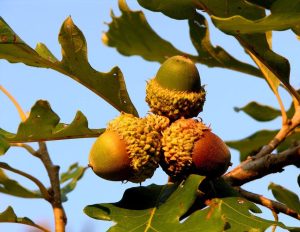By Debbie Roland and
Emmy Ulmschneider
Master Gardeners
Last week we looked at the proper way to plant a tree. Now let’s talk about how to pick a tree.
First, we want to point out that the Master Gardener local website has two excellent resources for this at westtexasgardening.org\resource. From the Resources tab, click on Plant Information, which brings you to Recommended Plants. Select the Tree Guide for the Permian Basin or from the same tab click on the 2022 PBMG Recommended Plant List for the Permian Basin and scroll down to the trees section.
Most of us have our favorite trees and we have put together some information from our own gardeners about the strengths and weaknesses of some of them. But before we talk trees, let’s look realistically at the place where we live.
We live on the Llano Estacado, the Staked Plains. It is part of the High Plains ecoregion which is dominated by a short grass prairie. The general lack of trees means we are a land of little moisture.

Since 2000, our mean average rainfall was 13.36” varying from 5.46” in 2011 to 22.63” in 2015 (See weather.gov/wrh/climate?wfo=maf). For comparison, to produce pecans, a pecan tree needs about 2” of water per week during the growing season which is roughly April to October. When you think about what kind of tree you want, consider its water needs: how much water you are going to use to keep that tree alive and how much heat can it tolerate?
Looking around our yards now it is easy to see what kinds of trees are suffering. Generally, native trees adapted to our conditions, use less water, and can handle heat better. Consider also what you want that tree to provide. Are you looking for a large shade tree, a tree to provide habitat, or a small tree to accent your landscape with color.
Here are a few of our favorites that you might want to consider.
Large Shade Trees:
- Escarpment Live Oak. Be sure you have room for these. This tree has a 50’ spread so be sure you have a 50’ yard or space for the growth.
- Afghan Pine. This tree will also be quite large with a 30’ spread and 70’ tall.
- Italian Stone Pine. This one sheds it bottom branches so it doesn’t make a great windbreak but is a beautiful tree.
- Bur Oak. Beware of the size of the tree and the acorn. We don’t recommend planting close to your house or in an area where you frequently walk. The acorns are very large and can break windows and hurt if they hit you in the head.
- Chinquapin Oak and Monterrey Oak. Will get 50’ tall and both have acorns.
- Cedar Elm. One of our favorite all round deciduous trees.
Medium:
- Mesquite: A Mesquite is also a good tree when pruned to have one (or just a few) trunks. Since the biggest complaint about this tree is the thorns, we find that if you keep the thorns pruned off the trunk they will eventually quit producing thorns on the trunk area.
- Desert Willow. A flowering tree that can also be grown as a bush.
Small:
- Golden Ball Lead Tree (now Little Leaf Lead Tree) is a beautiful tree and is recommended.
The Tree Guide mentioned above has a complete list of small, medium, and large trees with all the information you need on each tree in a table form. It is easy to use! And checkout the PBMG Recommended Plant list. Happy Planting!
If you have questions, call the AgriLife office in Odessa at 498-4071 or in Midland at 686-4700. Additional information, and our blog for access to past articles, is available at westtexasgardening.org. Click on “Resources.”




